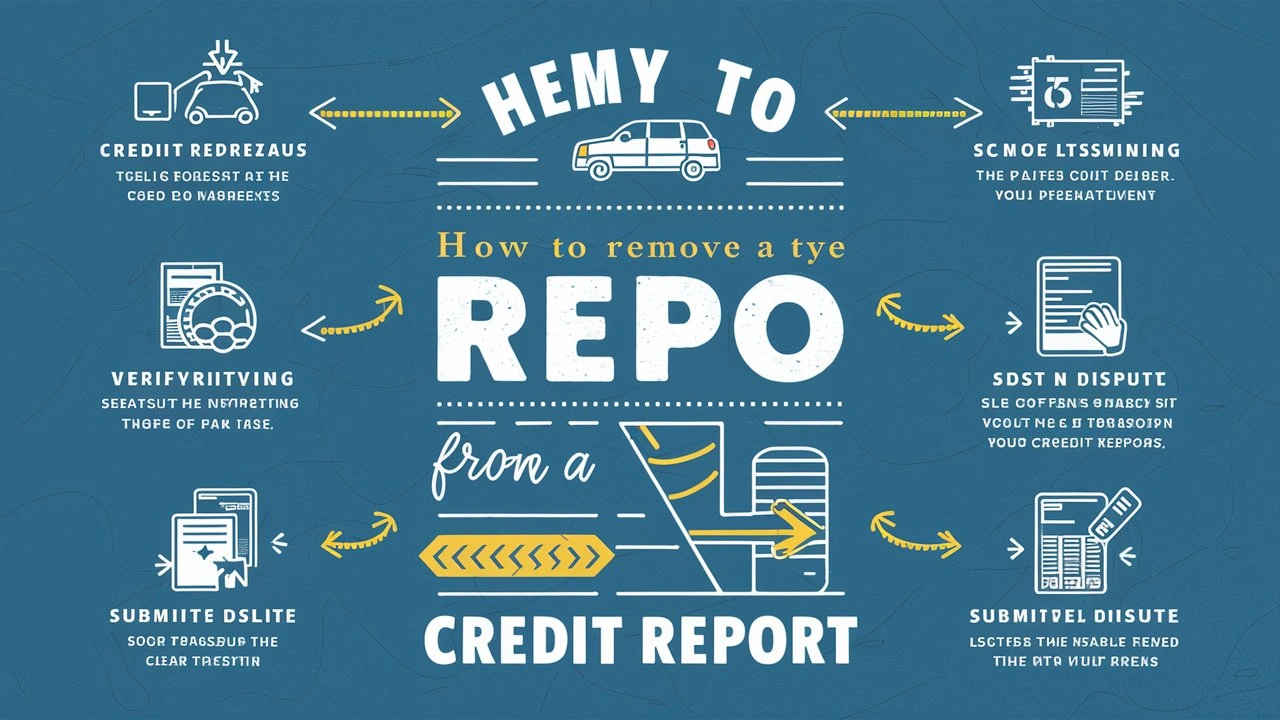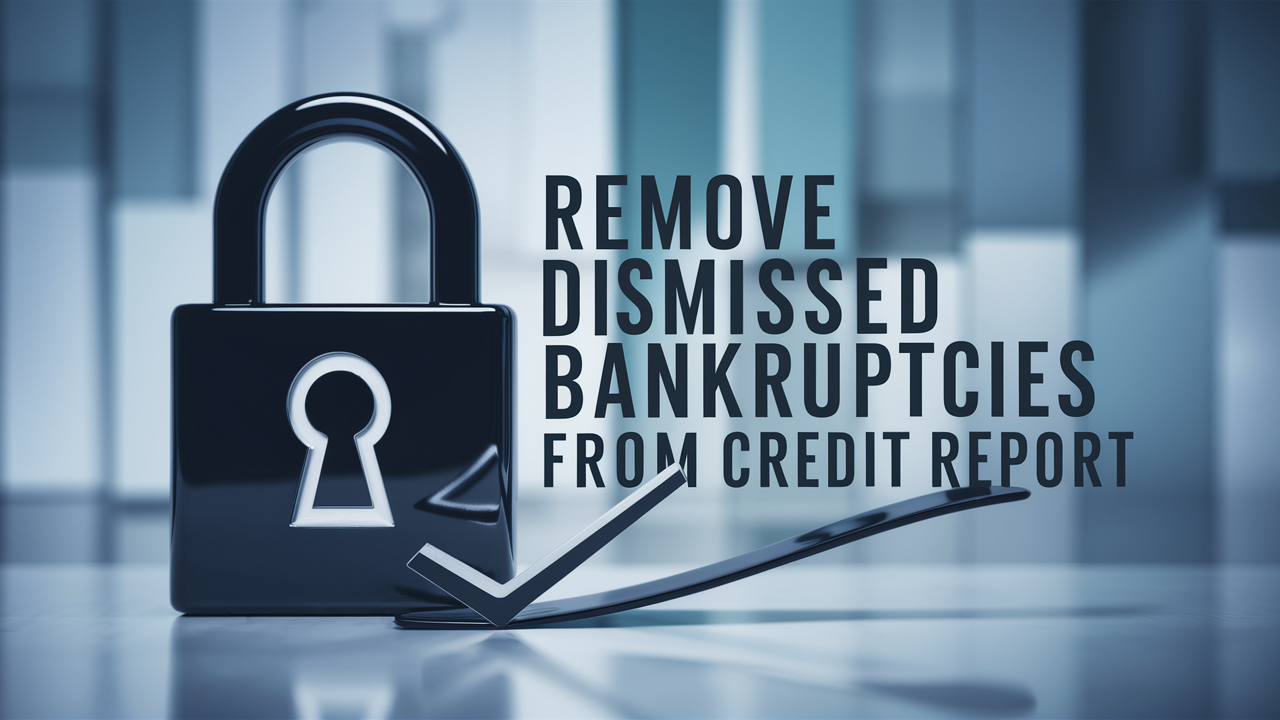How To Remove A Repo From Credit Report?

It is also devastating to face the loss of your car or any other property that was acquired through repossession. Not only are you left without an asset that you presumably relied on, but your credit rating is damaged because of the negative entry on your credit report. This makes it quite difficult to secure future loans or lines of credit as required by people in their everyday lives.
The good news is that you don’t have to stay in repo status forever if you went through it, meaning it doesn’t have to be permanent. It is a fact that you can get a repo removed from your credit report under certain circumstances, provided that you follow the right procedures. Here is what you should know about having a repossession removed from your credit report.
The duration is relatively short because repos are deemed to be more severe than typical credit card actions like late payments or even cash advances.
As a result, it is crucial to know in general how long the repo marking lasts on your credit report before trying to delete it. The Fair Credit Reporting Act FCRA states that credit reporting agencies can legally report a repossession for up to seven years from the time it happens.
This is the same period for most of the negative credit report entries, such as the payment histories, collection accounts, and bankruptcies. While late payments are technically capable of remaining on your report for up to 10 years, seven years is the norm.
Why Is There a Repo on My Credit Report?
Once an auto lender or other financing company seizes a car, home, or any other property, they also report this to the three credit bureaus: Experian, TransUnion, and Equifax. This puts a repossession entry on the public records and/or accounts part of your credit report.
A repo on the report tells other lenders that the borrower did not or was unable to make payments on significant properties or assets in the past. This makes you an extremely risky borrower in their eyes. That means you are likely to be rejected for car loans, mortgages, credit cards, or any credit for several years after the repossession.
Can You Erase a Repossession from Your Credit Report?
The Fair Credit Reporting Act provides legal guidelines that bar credit reporting agencies from providing credit reports containing erroneous and stale information. Therefore, if there was a mistake made, for example, wrong date or name in your repo, you have the right to challenge the correctness of such data. If this leads to the alteration or deletion of the entry, it can assist in enhancing your credit score.
However, beyond errors, repos in general cannot be deleted or expunged from your credit report within the seven years that they are permitted to be reported.
That being said, there are some occasions when you may contact the credit agencies and have a repossession removed from your credit report. These include
You made a default on payment. When a person gets a discharge under the Chapter Seven Bankruptcy Act, all the unfavorable accounts may be expunged from the report. Therefore, if your repo happened before filing your bankruptcy, then it might be eligible for removal from reports if you request it.
You paid the loan current – If you can make all the missing payment obligations and fees for the loan tied to the repossessed property, you have the option to ask the credit agencies to delete the repo from your credit reports. Since the account itself would not be considered delinquent or in default, the derogatory mark that is associated with the account could be eliminated.
You stand a chance of asking for the removal of the repossession on your report. If repossession is the only bad mark on your credit report, then there are chances that you approach the first creditor who repossessed your car and request them to erase it. However, if you prove to them that you have a good payment history in the future, they may agree to ask the credit bureaus to delete the repossession out of goodwill.
The further you are from the date of repo, the better your chances that it may be allowed to be removed as well. If it’s been several years since the event, then it most likely falls into the delete category, especially if you have also rebuilt your credit backup as well.
Disputing Inaccurate Repossession Entries
If you obtained your credit report from AnnualCreditReport. Com and find some entries related to repossession that are incorrect, for example, the date of repossession or the name of the creditor, then you have the right to file a dispute. Here are the steps to take.
- Specify to what extent the information provided in the repossession listing is wrong. Always jot it down beside the report or account number inclusive of it.
- Compose dispute letters pointing out the wrong information to Equifax, Experian, and Transunion bureaus. In detail, outline what data is incorrect and to what should it be changed. It is also useful to provide copies of any proof that may exist.
- Mail the letters of dispute to each company using certified mail. Record the dates letters were sent and ensure these are stored in a secure place.
- The credit bureaus have the mandate of investigating the disputed information with the company that reported it within thirty days. Normally, you will receive status notification letters stating whether or not changes were made within 45 days. The credit reports are usually revised within a period of 2 to 3 months.
- If there were mistakes and they fixed them, it would read ‘updated’ or ‘modified’ in the future, but the repo tradeline itself stays for seven years unless there is an argument for other reasons for deletion. But having the right details can still enable one.
Errors Correction with the Creditor/Lender
In addition to filing disputes directly with the credit reporting agencies, you should notify the creditor who reported the information. It might also be useful to send them a dispute letter as well, requesting that they rectify or remove the wrong information.
Also, furnish them with the same information you gave the credit bureaus on what is inaccurate and anything that may prove this. Be professional but assertive when you say that you’d like the mistakes corrected not only in employee records but also in the credit reporting agencies to which the repossession was reported.
In addition, maintain records of your communication, and you should follow up within 30 days if there is no change. It can be necessary to phone and take some issues to a manager if necessary to attract more attention to correct mistakes and report changes correctly.
Wooing Creditors to Drop the Goodwill Deductions
Instead of attempting to challenge any erroneous information connected to a repossession, you’re interested in whether the initial creditor would be willing to request for the repossession to be removed out of benevolence. Here is the best approach to take.
- Retrieve your current credit reports and scores so you are aware of the situation at the current time. Determine whether there are any other delinquent marks beyond the repossession that need to be cleaned up first.
- Pay up any dues that are in arrears and ensure that the other creditors do not report you as being credit-listed. If your profile looks good, then the creditor is much more willing to do you a favor. That’s why only an isolated repossession helps you in comparison to lots of late payments as well.
- Compose a goodwill deletion letter politely requesting the creditor to consider forgiving the repossession that has since become older but is considerably affecting your credit capacity. Stress that it was a one-time occurrence due to certain circumstances that one has grown wiser from. Supply any evidence of responsible credit management since.
- Mail the letter and follow up the call to confirm that the creditor received the letter and if they would be willing to let their internal credit reporting team send a request to delete the repossession account from your credit history. The follow-up must be patient but persistent.
The more convincing you are that you are a responsible consumer who has fixed your credit status after the event that led to the repossession, the more sympathetic you will perhaps be. Eliminating collection accounts and keeping the utilization ratio low also point toward behavioral change.
If the primary lender agrees to request deletion from the credit bureaus, continue to follow up with them to ensure that it is done within a few months. Then, check to ensure that the repo tradeline has been removed from your credit file after the normal reporting cycle periods. If not, simply continue to chase the request to fix errors or rectify something until it goes through correctly.
How to Handle Your Repossession Removal Request When It Is Rejected?
Sadly, not all loan issuers will be patient or willing to make a special exception on your behalf if the repossession in question is a clear indication of your previous payment issues. If your original repo creditor refuses to help pursue the deletion of the derogatory event from your reports, here are some fallback options.
- Instead, people should ask if they would agree not to go on reporting the outdated repossession information. From a technical aspect, creditors can continue to report repos without any end in sight. Just telling them not to report more than seven years could at least stop it from worsening the situation for you even more.
- Check your other reports and see if the repossession information is being reported by other bureaus. Even if one or two bureaus can remove it, it still helps to lessen the score ding.
- Follow up on keeping the credit reports clean by eliminating the late payments and making sure that the balances on the credit cards do not exceed more than 50%. These positive reporting steps are applied in the long run and aid in counterbalancing the negative impact of the repossession to regain the lost score over time.
- If you find yourself in a post-repo situation, seek credit counseling help if required to get on track again. It can offer directions and strategies on how to assist you in returning to normalcy.
Finally, seek advice from a consumer credit attorney to determine whether you have any grounds to legally request removal under consumer laws. Perhaps there are time limits or reporting violations that you could take advantage of in an attempt to pressure the removal request. However, legal assistance probably has a fee and does not guarantee the fixing of the issue.
Even so, performing the steps in this article offers the most effective direction when handling a repossession that no longer ruins your credit score and your capacity to secure future loans and credit. Be polite and firm and show proper use of money after the crisis that led to the repossession against you. It takes time to reduce its overall impact.
Ready to boost your credit score? Call +1 888-804-0104 now for the best credit repair services near you! Our expert team is here to help you achieve financial freedom and improve your credit. Don't wait—get started today!
Related Stories
Recent Posts
How to Choose a Credit Repair Company in 2026
Does Closing a Checking Account Affect Your Credit Score? Here’s the Truth
Is a Home Equity Loan a Second Mortgage? The Definitive 2025 Guide
Which Credit Score is Most Accurate? FICO vs VantageScore
Does Closing a Checking Account Affect Credit Score? – Complete Guide for Consumers



